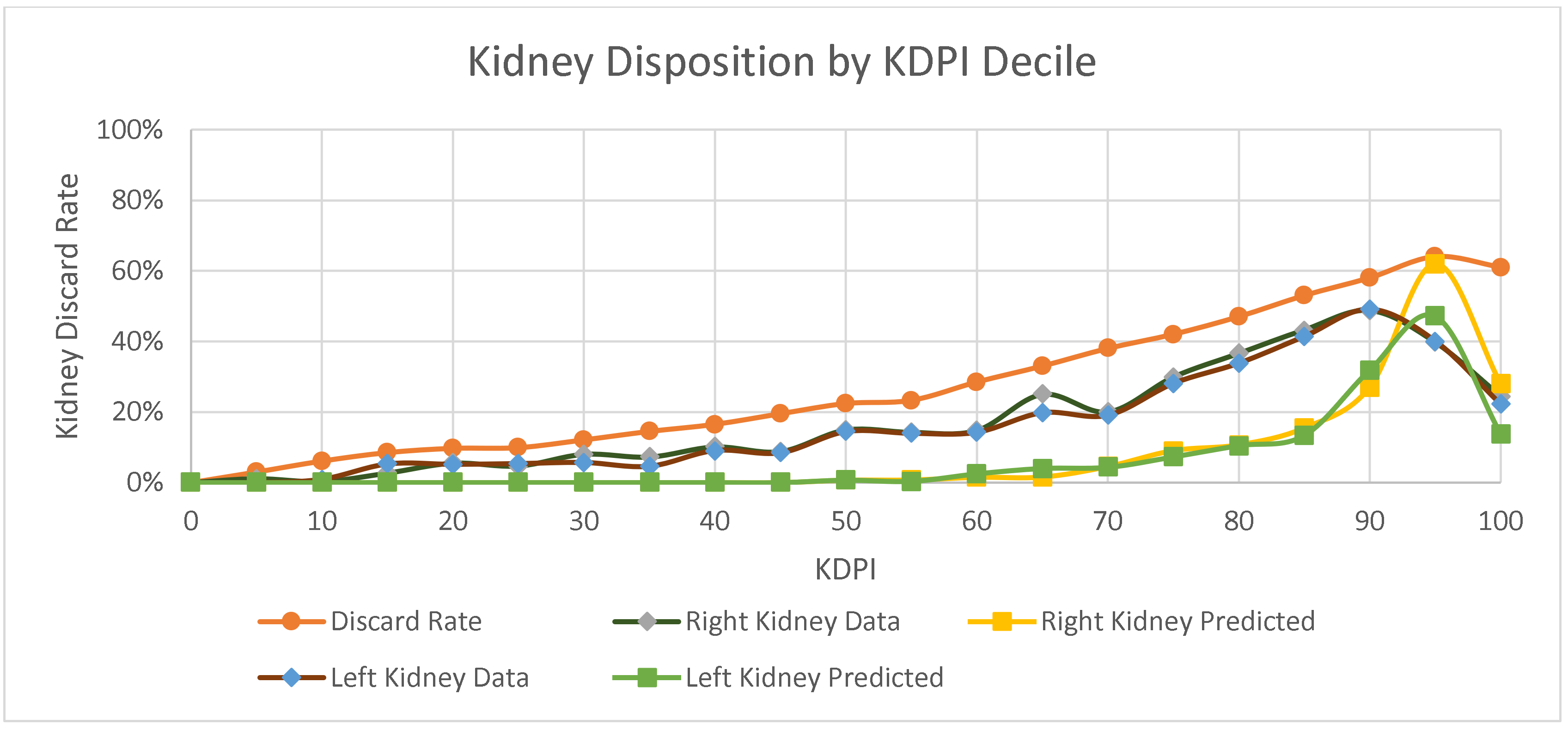Donor Disposition AI Model to Predict Transplant for Recovered Deceased Donor Kidneys
1MST, Rolla, MO, 2SLU, Saint Louis, MO
Meeting: 2022 American Transplant Congress
Abstract number: 711
Keywords: Donors, marginal, Kidney transplantation, Organ Selection/Allocation
Topic: Clinical Science » Kidney » 31 - Kidney Deceased Donor Allocation
Session Information
Session Name: Kidney Deceased Donor Allocation
Session Type: Poster Abstract
Date: Saturday, June 4, 2022
Session Time: 5:30pm-7:00pm
 Presentation Time: 5:30pm-7:00pm
Presentation Time: 5:30pm-7:00pm
Location: Hynes Halls C & D
*Purpose: Current practice for accelerated kidney placements rely heavily on the Kidney Donor Profile Index (KDPI) to determine if recovered deceased-donor (DD) kidneys are hard-to-place. A neural network model using DD disposition is trained to predict Not Transplanted (perfect correlation with discard) or Transplanted based on features beyond those used to calculate KDPI. These models may aid Organ Procurement Organizations (OPOs) in quickly identifying hard-to-place kidneys for early accelerated placement.
*Methods: The data used to train and test the neural network was obtained from the Unified Network of Organ System (UNOS). Missing values limited the study to the most recent four years of DD data. We deployed feature elimination techniques and advanced 35 DD features to use for the models. A 4-layer convolutional neural network is developed to train the models while saving 15% of the data for testing. Missing values on dual kidney label led to treating each kidney separately, creating two copies of the data and isolating features that belonged to one kidney when analyzing the other. Model development is performed in Python using TensorFlow on Google Colab.
*Results: Fig. 1 shows the current discard rate, historical disposition data of both kidneys, and two models’ prediction of disposition on both kidneys. The models were trained and tested using principal DD features, such as kidney scarring, hypertension duration, glomeruli count, KDPI, etc. Both models trained on the principal features yielded 85% accuracy and greater opportunity space to aptly identify hard-to-place kidneys instead of KDPI alone at 83% accuracy. The disposition prediction models are moderately sensitive to high KDPI but not for lower value KDPI, and many DD features influence disposition models that may otherwise be discounted. Expanded criteria donors may cause the peak at 95 KDPI relationship, whereas decline may be due to early accelerated placement not ascertained in the data.
*Conclusions: Current practice of quickly identifying hard-to-place kidneys solely on KDPI may overlook crucial DD features. This study aims to use an impartial approach for quickly identifying hard-to-place kidneys using broader DD features. Both models show significant improvements to KDPI and could serve as tools in identifying when to engage in accelerated placement. Limitations include dual kidney model label, and lack of info on accelerated placement for out-of-sequence placements. Future work will consist of feature selections using refined deep learning algorithms to increase prediction performance for high KDPI kidneys.
To cite this abstract in AMA style:
Ashiku L, Threlkeld R, Dagli C, Schnitzler M, Canfield C, Lentine K, Randall H. Donor Disposition AI Model to Predict Transplant for Recovered Deceased Donor Kidneys [abstract]. Am J Transplant. 2022; 22 (suppl 3). https://atcmeetingabstracts.com/abstract/donor-disposition-ai-model-to-predict-transplant-for-recovered-deceased-donor-kidneys/. Accessed December 22, 2025.« Back to 2022 American Transplant Congress

